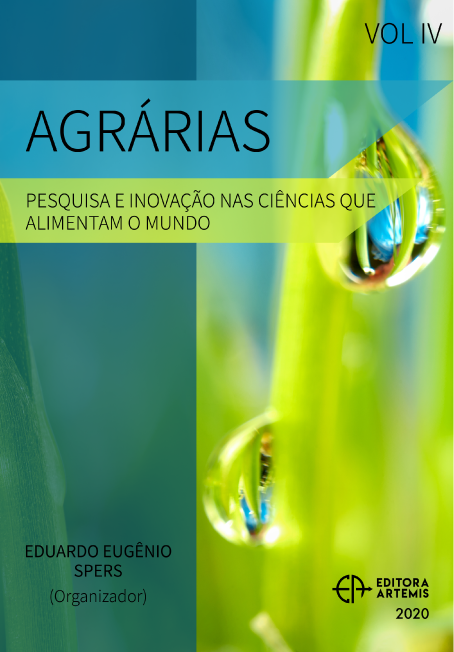
CENÁRIOS DE MUDANÇA CLIMÁTICA E OS IMPACTOS NA BIOCLIMATOLOGIA ANIMAL PARA O ESTADO DO RS
a bioclimatologia animal, estuda as relações entre os animais e o clima visando a garantia do bem-estar animal e aumento de sua produtividade. As mudanças no clima podem intensificar o estresse térmico em decorrência de alterações no balanço de energia térmica entre o animal e o ambiente. Assim, o presente trabalho teve como objetivo realizar a análise bioclimática do ambiente externo, a partir da espacialização do índice de conforto térmico (THI) no RS, em cenários de mudança climática. O THI foi calculado para a situação de máximo desconforto térmico (nos meses de verão), a partir da temperatura máxima do ar (Tmax) e da umidade relativa mínima do ar (URmin). Os dados meteorológicos utilizados como referência para o “cenário atual” foram obtidos do INMET. Para a criação dos cenários de mudança climática, foram acrescentados 0,5º, 1,5º e 3º C na Tmax (médias do período de 1961-1990) e calculou-se a redução da URmin nesses cenários. A análise geoestatística e confecção dos mapas temáticos foram realizadas utilizando o programa computacional GS+, versão 9. O THI apresentou dependência espacial com correlação significativa negativa entre os valores de altitude. O estresse térmico por calor (THI>74) atinge uma área superior a 70% do RS, que pode aumentar para 100%, se houver o acréscimo de 1,5 e 3ºC na temperatura do ar, conforme os prognósticos de mudança climática global. Diante disso, a espacialização do THI nas diferentes regiões do RS, pode ser usada como um indicativo para a adoção de medidas de acondicionamento térmico ambiental, que propiciem um melhor conforto térmico.
CENÁRIOS DE MUDANÇA CLIMÁTICA E OS IMPACTOS NA BIOCLIMATOLOGIA ANIMAL PARA O ESTADO DO RS
-
DOI: 10.37572/EdArt_25531122016
-
Palavras-chave: Índices de Conforto Térmico; Mudança Climática; Geostatística.
-
Keywords: Thermal comfort indexes; Climate Change; Geostatistics.
-
Abstract:
animal bioclimatology, studies the relationship between animals and the climate in order to guarantee animal welfare and increase their productivity. Changes in climate can intensify thermal stress due to changes in the balance of thermal energy between the animal and the environment. Thus, the present work aimed to carry out the bioclimatic analysis of the external environment, based on the spatialization of the thermal comfort index (THI) in RS, in scenarios of climate change. The THI was calculated for the situation of maximum thermal discomfort (in the summer months), from the maximum air temperature (Tmax) and the minimum relative air humidity (URmin). The meteorological data used as a reference for the “current scenario” were obtained from INMET. For the creation of climate change scenarios, 0.5º, 1.5º and 3º C were added to the Tmax (averages for the period 1961-1990) and the reduction of URmin in these scenarios was calculated. The geostatistical analysis and the making of thematic maps were performed using the computer program GS +, version 9. THI presented spatial dependence with a significant negative correlation between the altitude values. The thermal heat stress (THI> 74) reaches an area greater than 70% of the RS, which can increase to 100%, if there is an increase of 1.5 and 3ºC in the air temperature, according to the predictions of global climate change. Therefore, the spatialization of THI in different regions of RS, can be used as an indicator for the adoption of environmental thermal conditioning measures, which provide better thermal comfort.
-
Número de páginas: 15
- ZANANDRA BOFF DE OLIVEIRA
- Eduardo Leonel Bottega
- Alberto Eduardo Knies

